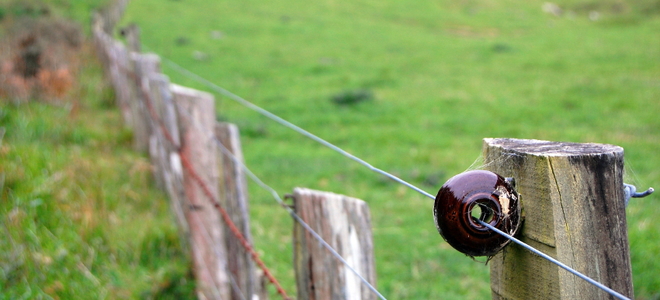Electric Fencing 101
People that have pets are the most common to install electric fences on their property to keep their pet close to home without physical fences blocking their lawn. There are advantages and disadvantages to the different kinds of electric fences. This article from DoItYourself.com points out what you should know before taking the plunge of buying and installing an electric fence.
What to Consider Before Purchasing an Electric Fence

When you are considering purchasing an electric fence, there are two main decisions to keep in mind: what type of electric fence you want and what amperage and voltage to use. Electric fences will deliver a jolt of electricity when touched or crossed. The amperage of the electric fence determines the strength and severity of the shock that it will generate. When considering purchasing one of these electric devices, there are several things to keep in mind.
Warning: Double-check product standards and safety guidelines regarding your animal type before making your fence purchase. Remember not to use more voltage or amperage than required, as this can hurt both animals and humans. Many states, cities, and counties have laws related to maximum voltage that you should research before making your purchase.
Types of Electric Fences
There are three main categories of electric fences.
Above-ground Fence
The first type is the standard, above-ground electric fence. This type of fence will typically consist of posts and wire. Anyone that touches the wire of this fence will receive an electric shock.
Underground Fence
The second type of electrical fence is the underground fence. This type consists of electrical wire buried in a small trench surrounding the perimeter area. For this type of fence to deliver a shock, the animal must wear a receiver in a collar.
Wireless Fence
The third type is called a wireless fence, and it has a transmitter that sends a signal outward, creating a circular boundary. For this type to work, the animal must also wear a receiver in a collar.
Fence Amperage and Voltage
With all electric fences, the intended outcome is to deliver a shock to startle the animal without causing any harm. If the fence is created to keep people out, usually a warning sign on the fence is enough to stop someone from attempting to cross it.
Amps
The amperage required of your electric fence depends on what the fence is keeping in or out of your property. If the amperage is too low, the electric fence will not be effective, and if the amperage is too high, the shock could be harmful to the animal or human that is shocked.
Volts
You will typically see voltage amounts used as well as amperage. Voltage is the power of flow, while amperage is the current, or the rate of flow. Most often, these two measurements are seen together. Even though voltages are high in electric fences, current (amps) is very low and is generally intermittent or pulsed. Amps are the dangerous part of an electrical charge.
Some studies have concluded that a minimum of 2,000 volts is required to create an effective fence. The typical voltage on an electric fence when keeping cattle is 3,000 volts. This is enough voltage to deliver a startling shock.
Keeping Purpose in Mind
When considering this kind of fence, keep the reason for using it in mind. The type and size of animal intended for the fence will help determine what type of fence is best and what voltage and amperage the fence will require.
Article sourced from: http://www.doityourself.com/stry/electric-fence-and-amperage-what-to-go-with



